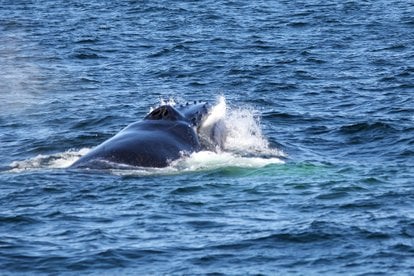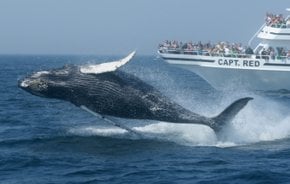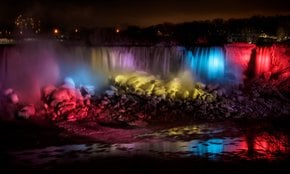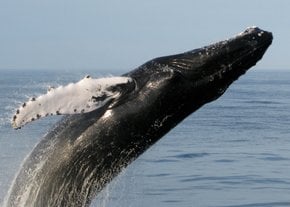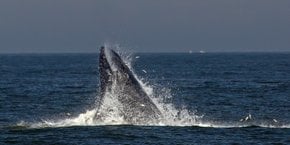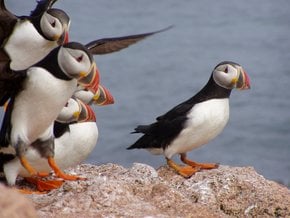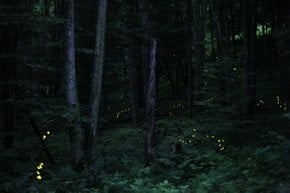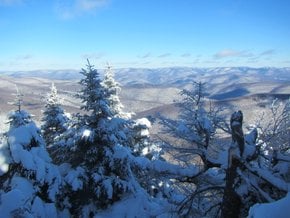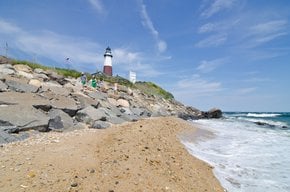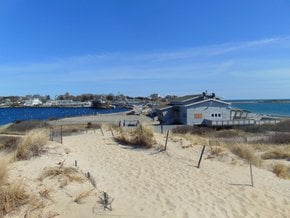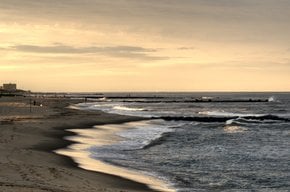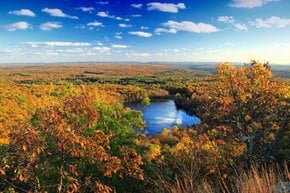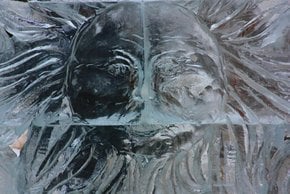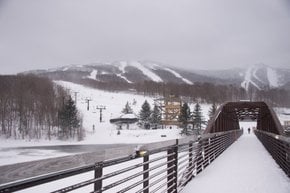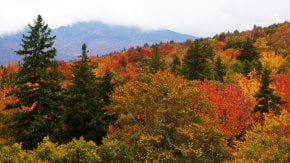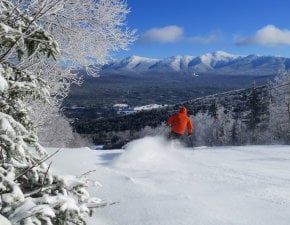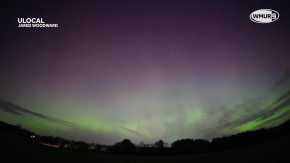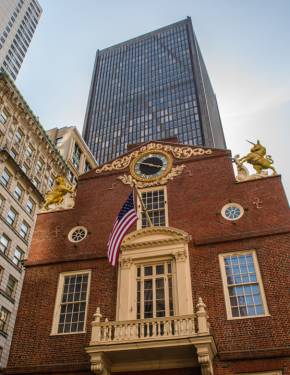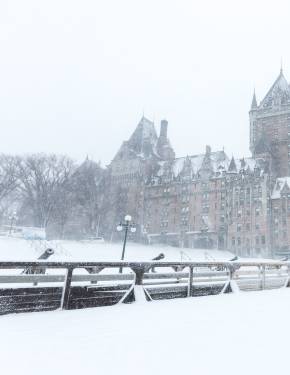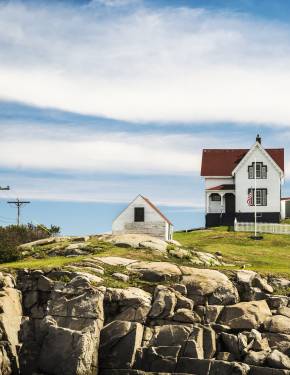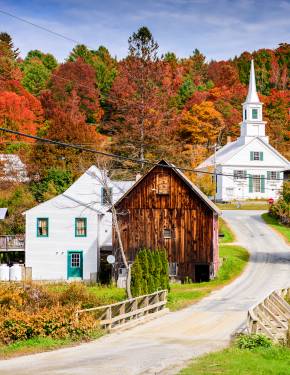Whale Watching in New Hampshire 2026
A great sea adventure along New England's shore
Best time: mid-May–late October
Every spring, dozens of whales flock to their feeding grounds in New England waters. Some of the most treasured marine sanctuaries in the North Atlantic, Jeffrey Ledge and Stellwagen Bank are located in proximity to the New Hampshire coast. Therefore, the Granite State offers good chances to spot gorgeous sea mammals during the warmer time of the year. Humpbacks, fin, and minke whales, as well as Atlantic white-sided dolphins, are usually spotted during whale-watching excursions. Less common are harbor porpoises, sei whales, pilot whales, and endangered blue and right whales.
Best Places for Whale Watching
Whale-watching boats go as far into the ocean as 12-30 miles (20-40 km) from Rye and Hampton Harbors. They head either to the Jeffreys Ledge area or south to the Stellwagen Bank National Marine Sanctuary in Massachusetts, the top locations to spot giant sea mammals. These sea plateaus boast a great abundance of plankton and krill that have become the favorite feeding and nursing areas for several whale species, including the rare North Atlantic right whales.
Whale Watching Tours
New Hampshire whale watch tours have a whale sighting success rate of 80-99%. The tours last for about 4 hours. Ticket prices vary around $50 for an adult. Boats have restrooms, galleys, and other amenities. Private charters are available as well. If you do not see any whales or dolphins, most tours offer a free pass, valid for one or two years, to do the tour one more time.
Tours from Rye near Portsmouth
The city of Rye has a few whale-watching tour operators. The largest of them is Granite State Whale Watch that offers tours, guided by a naturalist affiliated with the Blue Ocean Society for Marine Conservation, from late May through mid-October. During a high season from mid-June to September boats depart twice a day. Tours head to either Jeffreys Ledge or the northern part of the Stellwagen Bank. Ticket costs $50 for adults, $43 for elders over 60 years old, $37 for children between 4 and 15 years old. Children under four can enter for free.
The ships depart in Rye Harbor. From May 25 until June 9, tours take place at 11 am on Saturday and Sunday, while on June 10-14, they are scheduled daily at 2 pm. From June 15 until August 25, tours unfold daily at 8:30 am and 2 pm, while on August 26-30, September 2nd, they take place daily at 11 am. On August 31 and September 1, tours are set to depart at 8:30 am and 2 pm, while from September 4 until October 13, they take place at 11 am on Wednesdays, Fridays, Saturdays, and Sundays.
Tours from Hampton
In Hampton, Al Gauron whale-watching cruises operate daily from June into September. They generally last four hours and depart from a dock at Ocean Boulevard in Hampton Harbor. Operating for more than 75 years, the tour operator offers magnificent cruises, tickets to which cost $50 for adults, $40 for elders over 65 years old, children 12 and under, and military personnel. Tours are generally scheduled at 1 pm and 4:30 pm.
Whale Watching Season
Whales start to arrive in New England waters as early as March and leave as late as November. However, whale-watching tours are usually running only from late May through the end of September. It's not easy to predict whales' behavior, so there is no particular month with a higher chance to spot them. July and August are the most popular months for whale watching due to the nicer weather.
Humpback whales
North Atlantic humpback whales are the most abundant along the New England coast. They are also great to watch due to their playfulness and amicable behavior. They are not shy to swim along with a boat or appear out of nowhere before the crowd with a sudden air flip.
Each humpback's fluke has a unique pattern, so it's quite easy for scientists to identify and trace them. These whales communicate through melodious calls or "songs." Whale calves also "whisper" to their mothers. From spring through summer, there are dozens of humpbacks in the Gulf of Maine. These species live up to 80 years.
Fin whales
Fin or finback whales are larger than humpbacks. They are actually the second largest of all whale species, with a length of 85 feet (25 m). Fins have dark grey bodies, light grey heads, white bellies, and curved dorsal fins. They can usually be spotted at the Jeffreys Ledge area during cooler early fall months. With their extra-large mouths, they consume water containing krill and small fish and then get rid of excess water, swallowing the prey.
Minke whales
Minke are considered small in a whale world. They reach just 30 ft (9 m) in length. During spring and summer, minke are abundant in the Gulf of Maine where they feed on herring, mackerel, and krill. They are filter eaters, like their larger relatives. However, they are not as easy to spot since they usually avoid people. They can also stay submerged for over 15 minutes before returning to the surface to breathe. Minke whales were named after a Norwegian whale spotter Meincke, who actually mistakenly identified minke as a blue whale.
Pilot whales
Pilot whales are known as very social cetaceans that are often seen in large pods. These pods, which sometimes consist of hundreds of whales, have a matriarchal hierarchy. Pilot whales reach 22 feet (6.7 m) in length and can be easily identified by a light spot on their bellies, reminiscent of an anchor or a heart. They can dive as deep as 1,967 feet (600 m). Pilots are also attracted by fish schools at Jeffreys Ledge, but their favorite food is squid. Pilot whales reproduce very slowly since they can only have a calf every three to five years.
Whale Watching Tips
Weather is not a big factor when it concerns whale watching. Rain or shine, whales need to come to the surface to breathe. However, whale-watching tours do get canceled in case of foggy conditions or rough seas. And it's also true that whales are much easier to spot when the weather is clear and the seas are calm.
What to Bring
Binoculars or a camera with a telephoto lens can come in handy during whale watching. If the weather is sunny, remember to bring sunscreen, a sun hat, and sunglasses. Water and snacks are optional since boats usually offer some food and beverages. If you suffer from seasickness, bring some medicine or take it before boarding the ship. You can bring a small stroller if you're enjoying the trip with your toddler. Unless pets act as service animals, they are mostly prohibited from getting on the boat.
What to wear
Keep in mind that it may be 10-15 degrees colder out in the ocean than on land. Make sure to put on some warm layers, a jacket, or a sweater to feel comfortable during your trip. Long pants are preferred. Shoes have to have rubber soles and closed toes. Tour operators strongly discourage wearing heels since the boat tends to move even on calm days.
Where to Stay
Rye and Hampton boast many beach-front hotels, which are also quite affordable. Small traditional inns are definitely part of New England's charm. If you prefer a larger hotel chain, there are many options in Portsmouth.
Tips for Photos
If you want to bring a professional camera, which tends to be expensive, on board, consider buying protective waterproof covers to protect your gear. With the boat rocking, some water splashes may get onto your camera. A neck strap is also useful to keep your camera safe and nearby during the cruise. Taking pictures fast during whale watching is crucial since whales come up to the surface for a short time. If you're using your smartphone, it's also best to shoot in burst mode, taking many pictures at once. Even if some may turn out blurry, others will definitely prove to be great snapshots.

